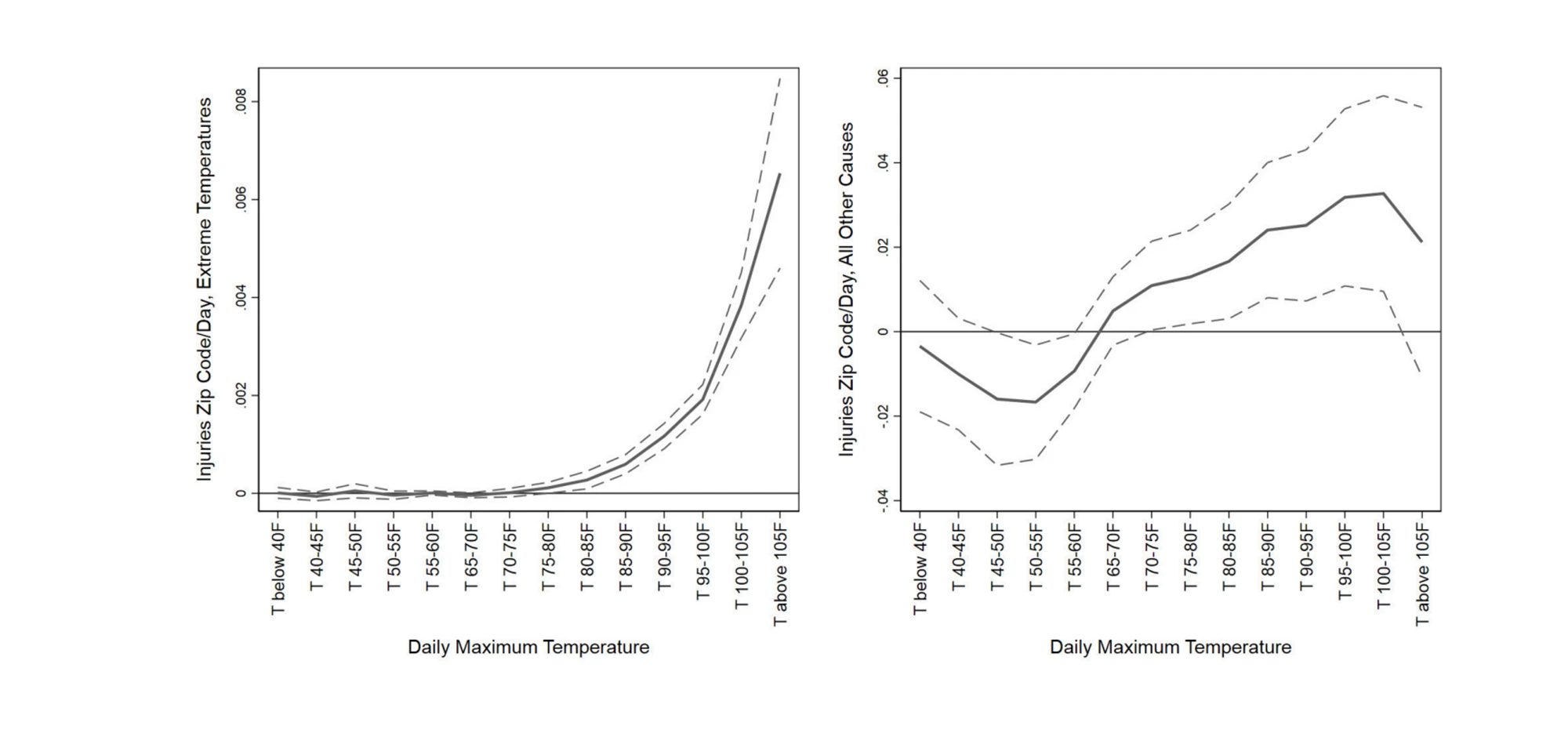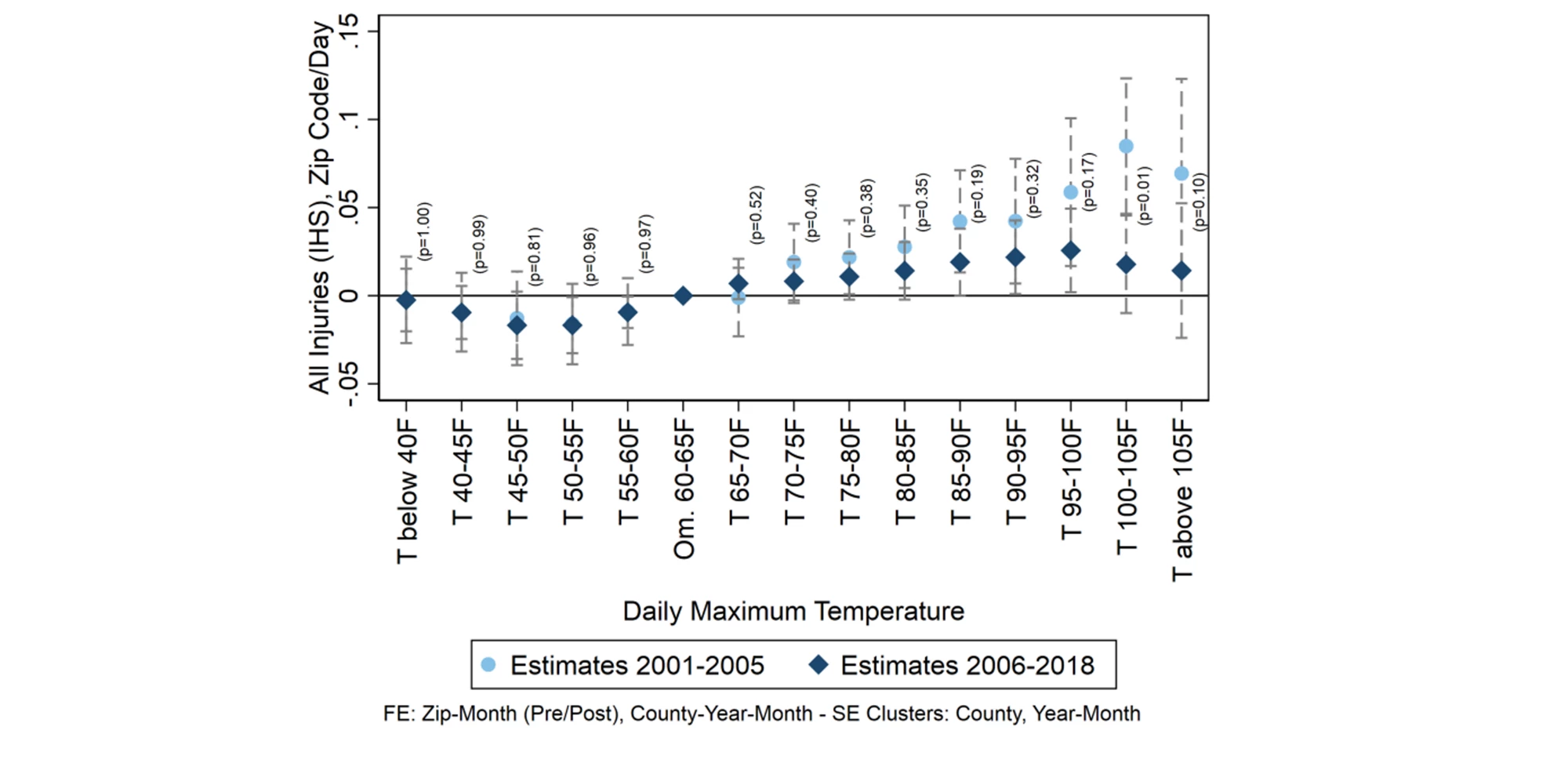 Workers exposed to extreme heat are directly affected in ways that harm their productivity and ultimately reduce economic activity. Photo: Mai Ky / World Bank
Workers exposed to extreme heat are directly affected in ways that harm their productivity and ultimately reduce economic activity. Photo: Mai Ky / World Bank
In July, the world experienced the hottest days and week on record, with extreme and dangerous heat occurring in the Southern and Southwestern United States, North Africa, Southern Europe, and India at the end of June. This follows a spring where Spain and North Africa set new records for high temperatures.
📈According to the #ERA5dataset, the 7 days from 3rd to 9th July 2023 were the 7 hottest days on record globally, making the first week of July 2023 the hottest week on record.
— Copernicus ECMWF (@CopernicusECMWF) July 11, 2023
Get the data 👉 https://t.co/V3rirrGxRD pic.twitter.com/Hy3OrNnY12
These heat waves highlight that exposure to extreme temperatures will be one of the most widespread consequences of climate change, affecting billions of people around the world in the coming decades. The most severe heat will occur in some of the most populated parts of the world.
Exposure to extreme heat has negative consequences for human well-being, including increased mortality and morbidity. The health impacts of these heat waves are largest in lower income countries, which are most exposed to future increases in temperature.
These effects can broadly be classified into three categories:
- Impacts on worker productivity
- Impacts on worker attendance or labor supply
- Impacts on worker safety
Research shows that exposure to extreme heat reduces worker productivity, not only for outdoor occupations like agriculture and construction, but also for indoor industries like manufacturing and transportation.
Many manufacturing jobs take place in non-climate-controlled environments, which can negatively impact worker productivity. The effects of heat on productivity occur in both high- and low-income countries, with more severe impacts lower-income settings. These effects can be significant, with plant level output in India reduced by as much as 3.5% in years with temperatures 1°C higher, and output in car manufacturing facilities in the United States 8% lower in weeks with six 90°F days. These declines in productivity result in lower wages for workers.
Even white-collar workers can be negatively affected by heat, with judges, financial traders, and government officials being less efficient on hotter days.
Heat reduces work hours for some people, with workers in outdoor industries reducing their hours by around 13% on the hottest days. This effect is similar across countries and is driven by increasing fatigue as workers spend more time in high temperatures. Workers with more flexibility in setting their schedules respond more to heat, highlighting an important potential adaptation of shifting the timing of work.
Fatigue from heat can also lead to increased workplace injuries, including non-heat-related injuries like falling off a ladder or being injured by machinery. Using comprehensive data on 20 years of workplace injuries, we find that working on days over 100F increases the incidence of non-heat-related injuries by up to 6%, which is more consequential for worker well-being due to the higher baseline incidence of non-heat-related injuries. Heat-related injuries are more common among lower-income workers.

Impact of hot days on workplace injuries (from Park, Pankratz, and Behrer (2021): The left panel indicates the impact of hot days on injuries that are coded as being related to heat directly (i.e. dehydration) while the right panel shows the impact on all other injuries.
But it is not all bad news. A policy change requiring firms to provide shade, water, and rest breaks depending on the daily maximum temperature substantially reduced the impact of heat on workplace injuries. This suggests that policy tools can help encourage adaptation to heat exposure and reduce its negative impacts.

Impact of heat on injuries before and after policy implementation (from Park, Pankratz, and Behrer (2021): The light dots indicate the estimated impact of heat on workplace injuries prior to the implementation of a policy designed to protect workers in 2005. The dark dots indicate the estimated impact of heat on workers after the policy was implemented.
The negative impacts of heat on workers result in a reduction in output and production across the economy. Numerous studies have found that GDP is lower in hotter years and that these effects persist over time. While estimates of the impacts of heat vary, there is some convergence towards estimates that indicate a 1C hotter year results in a 2% decline in overall economic activity. Reductions in worker productivity may be a substantial component of this loss in output.
Increased exposure to extreme heat will become an increasingly consequential fact of life for billions of people as the world warms. This heat will have negative health consequences but – because the health impacts are concentrated most among the young and old, who are collectively a minority of the world’s population – its negative impacts on workers are likely to affect many more people . These workplace impacts will result in lower wages, decreased safety at work, and an overall reduction in economic activity. Finding ways to productively adapt workplaces to this increased heat burden will therefore be an essential component of the world’s response to climate change.


Join the Conversation